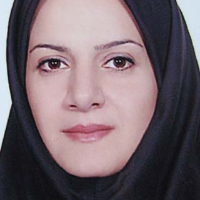The Effect of Resident's Sense of Belonging to the Place On the Neighboring Facades of Isfahan Maadis
Maadi's are the distinguishing characteristic of Isfahan city in comparison with other cities of Iran. Their calm and inviting side where humans and nature get along together can be combined with architectural elements, affecting the urban feature and landscape of urban neighborhoods. The facade of residential buildings adjacent to the Maadis greatly enjoys the sense of belonging to the existing space. It is one of the most influential factors in creating a connection between residential spaces and existing nature. The vital factor in this research is the response to the dual relationship between man and nature. Also, we focused on the impact of this relationship on the landscape and residential building envelopes. It is critical to meet residents' needs and expectations and provide a more favorable environment for users.
This research has the characteristics of quantitative and qualitative studies. The field research and implementation path are a type of consecutive exploratory combined research with a pragmatism paradigm in terms of data collection. In the first stage, the data of the qualitative study was collected in the field by performing interviews. In this stage of the qualitative data collection, a set of activities was performed, such as bibliographic study, observation, photographs, and interviews with experts. Finally, the thematic analysis method was used to classify the patterns of meaning from the data set. In the second stage, the quantitative study, a survey was done based on the researcher-made questionnaires, the answers, and it was used to apply the appropriate tools. The questionnaires were evaluated on a five-point Likert scale and randomly distributed among neighboring residents of Maadis. The data obtained from the questionnaires were analyzed by SPSS and AMOS software. Descriptive and inferential statistics were analyzed in SPSS software. The Cronbach's alpha was used to evaluate the reliability of the questionnaires, and the Kolmogorov-Smirnov test was applied to evaluate the normality of data distribution. In order to measure and analyze the effectiveness path of the Maadis component and the sense of belonging to the facade component, a set of variables related to each of them was entered into AMOS software. For confirmatory factor analysis of the mentioned component variables, structural equation modeling was used in AMOS software. Finally, both qualitative and quantitative analyses were interpreted at once.
The path coefficients of the central hypothesis, regression coefficients, and the number of partial indicators related to the hypothesis showed an effective relationship between the components, but they did not have the same value. The items of the Maadi's component were all identified with a strong and positive effect. The study of the components of the sense of belonging showed that emotional belonging had a substantial and positive effect on all items. In addition, the functional and conceptual components, with substantial and positive effects on one item, indicated a significant relationship between the components of Maadis and the sense of belonging with the components of the facade.
The results have shown that the sense of belonging and Maadis existence significantly affect facades. From the resident's perspective, the sense of belonging has the most significant effect on the facade, form, and size, then the facade components and the materials. So that in the component of form and size, elements such as the use of curved lines and volumes that are reminiscent of the movement and twisting of water in Maadis were considered significant. The human scale in the facade by using different divisions, creating complete and empty spaces by balcony design, the porch and retreat in floors, unity, and harmony between adjacent facades, coordination in the forms used in the facade as well as avoiding uniformity and the height of more than three floors, respectively, had the most significant value and impact from the residents' point of view. From the resident's perspective, the sense of belonging has the most significant effect on the facade, form, and size, then the facade components and the materials. The Maadis components, with their evocativeness, readability, tranquility and climatic comfort, and uniqueness, respectively, increased the impact of existing nature on the facade. Therefore, paying attention to the green infrastructure of Isfahan Maadis and attracting the participation of residents, under the influence of their sense of belonging, promotes the physical characteristics of the facades of the residential buildings adjacent to the Maadis.
- حق عضویت دریافتی صرف حمایت از نشریات عضو و نگهداری، تکمیل و توسعه مگیران میشود.
- پرداخت حق اشتراک و دانلود مقالات اجازه بازنشر آن در سایر رسانههای چاپی و دیجیتال را به کاربر نمیدهد.



